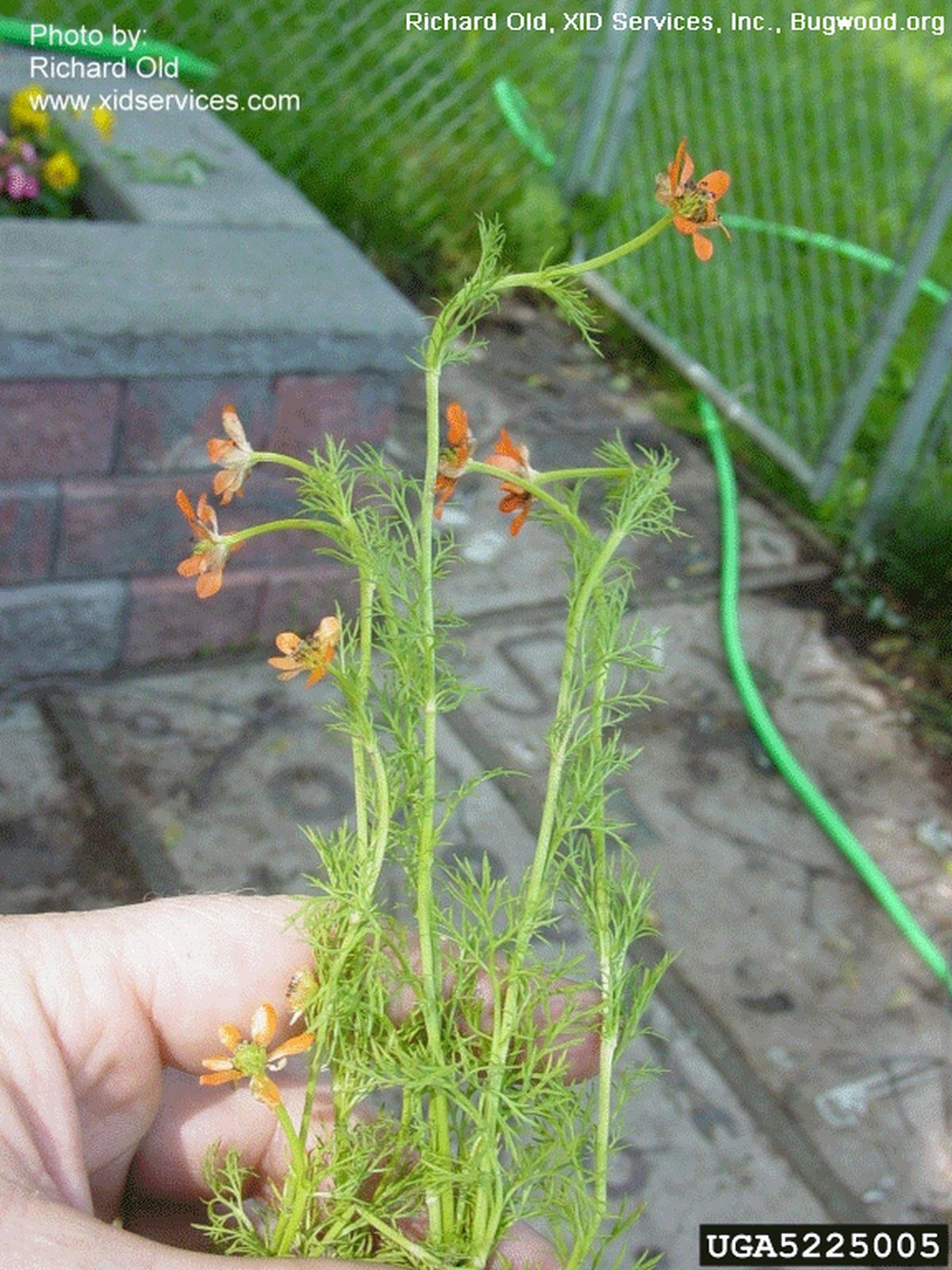Blooddrops
Adonis aestivalis

Family: Ranunculaceae
Other Scientific Names:
Records of Adonis annua from western states were based on misidentified Adonis aestivalis (Flora of North America).
Other Common Names: Autumn adonis, bird's-eye
Weed class: monitor list
Year Listed: 1991
Native to: Asia, Europe and Northern Africa
Is this Weed Toxic?:
humans, livestock
Why Is It a Noxious Weed?
This plant is on the monitor list - it is not a listed noxious weed in Washington. Please contact the Noxious Weed Control Board, noxiousweeds@agr.wa.gov , to report locations or for more information.
How would I identify it?
General Description
Herbaceous, upright annual that can grow to 18 inches (45cm) tall.
Flower Description
Flowers are cup-shaped, 0.6 to 1 inch (1.5-2.5 cm) in diameter. Its sepals are appressed to the petals. Sepals broadly obovate, minutely ciliate (hairy). Flowers have 6-10 spreading petals, dark red (orange to red-purple), usually with a dark basal blotch. Stamens 15-20, anthers purple-black when young, and pistils 20-30.
Leaf description
Leaves are finely divided, 2-3 pinnate, and are 1 1/4 to 2 inches (3-5cm) long. Leaflets are linear.
Stem description
Light to bright green and round, the stems are branching and grow frequent frilly leaves.
Fruit Seed Description
Fruit is a head of achenes, short-cylindric, with each achene 3-5 mm, hairless, beak straight 0.5-1 mm. Body of achene without transverse flange, abaxial keel not toothed.
Where does it grow?
Disturbed sites and open forests
How Does it Reproduce?
Seed only
How Do I Control It?
Mowing can stop flowering, but the plant will quickly regrow. Herbicide is used in spraying right of ways.
For More Information
The Flora of North America treatment of Adonis aestivalis
APHIS Weed Risk Assessment of Adonis aestivalis



